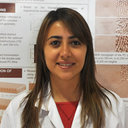Anemone-like nanostructures for non-lithographic, reproducible, large-area, and ultra-sensitive SERS substrates.
Từ khóa
trừu tượng
The melt-infiltration technique enables the fabrication of complex nanostructures for a wide range of applications in optics, electronics, biomaterials, and catalysis. Here, anemone-like nanostructures are produced for the first time under the surface/interface principles of melt-infiltration as a non-lithographic method. Functionalized anodized aluminum oxide (AAO) membranes are used as templates to provide large-area production of nanostructures, and polycarbonate (PC) films are used as active phase materials. In order to understand formation dynamics of anemone-like structures finite element method (FEM) simulations are performed and it is found that wetting behaviour of the polymer is responsible for the formation of cavities at the caps of the structures. These nanostructures are examined in the surface-enhanced-Raman-spectroscopy (SERS) experiment and they exhibit great potential in this field. Reproducible SERS signals are detected with relative standard deviations (RSDs) of 7.2-12.6% for about 10,000 individual spots. SERS measurements are demonstrated at low concentrations of Rhodamine 6G (R6G), even at the picomolar level, with an enhancement factor of ∼10(11). This high enhancement factor is ascribed to the significant electric field enhancement at the cavities of nanostructures and nanogaps between them, which is supported by finite difference time-domain (FDTD) simulations. These novel nanostructured films can be further optimized to be used in chemical and plasmonic sensors and as a single molecule SERS detection platform.


